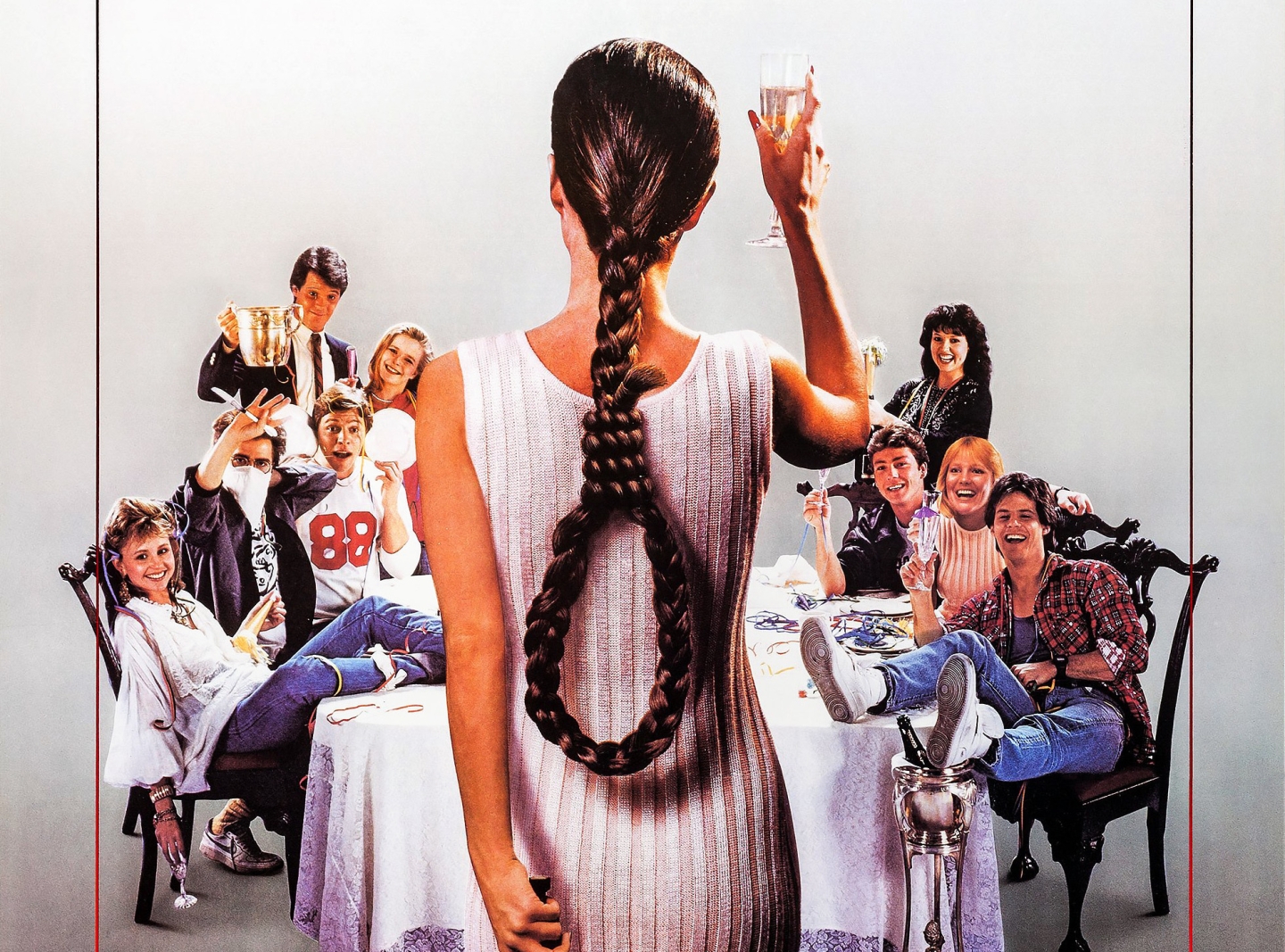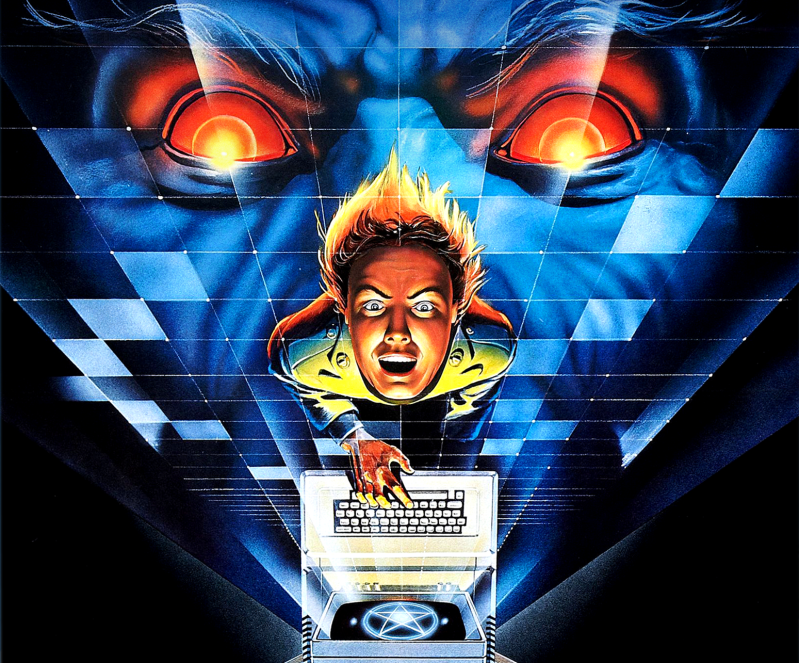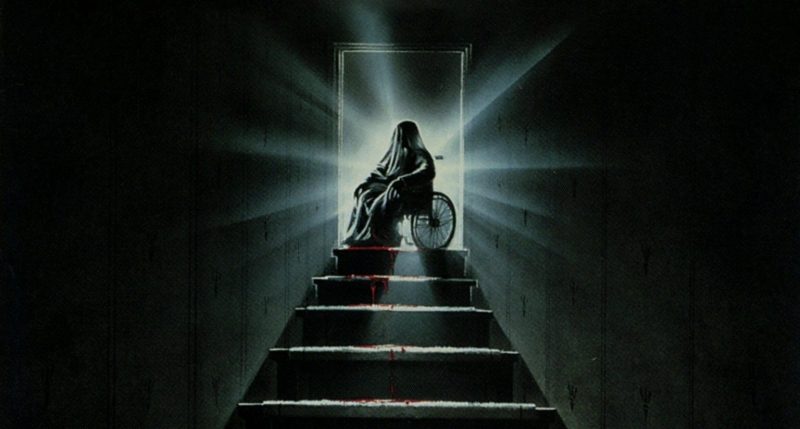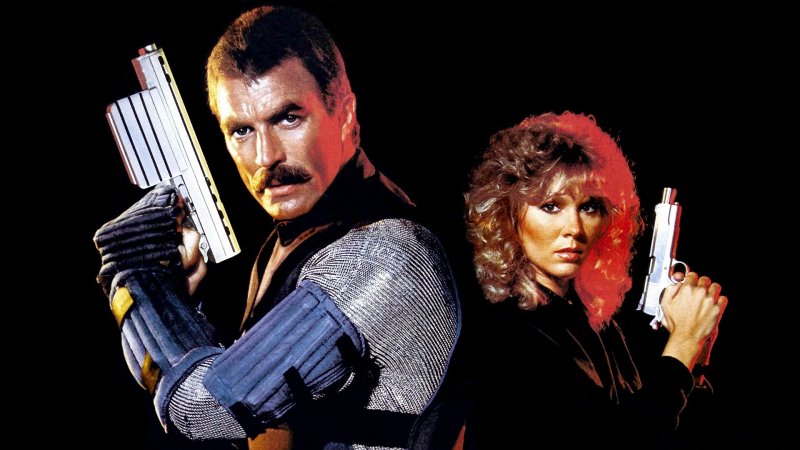
Director: Fred Walton
18 | 1h 29min | Horror, Mystery, Slasher
If there was ever a movie that lived up to its title, it’s Fred Walton’s fun and frivolous slasher April Fool’s Day. With Black Christmas, Halloween, Friday the 13th, Happy Birthday to Me, Mother’s Day and My Bloody Valentine having already found their way into theatres to varying degrees of success by the early 1980s, indie filmmakers had stumbled onto a very simple formula, one that was almost guaranteed to turn a profit: the holiday-themed slasher.
Producers left no stone unturned in their quest to exploit every last public holiday or annual event, cult action movie producers Golan-Globus even getting in on the act with Cannon Films catastrophe New Year’s Evil. It was a profitable, if largely uninspired niche market that made a healthy chunk of change for many people. It would also forge significant careers, world class director John Carpenter and savvy producer Sean Cunningham making their names off the back of holiday-themed characters who would go on to spawn huge properties that are still going strong. In hindsight, it’s amazing it took the horror genre so long to get there.
By the late 1980s, the slasher concept was on its last legs, fumbling blindly for locked doors like a vacuous teen destined for the graves of glory’s past. There were exceptions, cerebral efforts A Nightmare on Elm Street and Jason Lives! embracing supernatural characters and self-aware humour as a means to avoid the pedantic perils of the Motion Picture Association of America, who set out to banish realistic suburban horror in an era of censorship hysteria. The holiday-themed slasher had also dried up in terms of commercial clout, 1987’s Bloody New Year and Silent Night, Deadly Night 2 hardly making a dent. After a 6-year hiatus, Michael Myers also made a belated return, but even he proved a shell of his former self, 1989’s Halloween 5: The Revenge of Michael Myers plunging the series into the bargain-basement doldrums after Halloween 4‘s fair but insignificant returns. Fred Krueger gave the 80s a slasher swansong with the hugely successful A Nightmare on Elm Street 3: The Dream Warriors (1987) and A Nightmare on Elm Street 4: The Dream Master, but New Line Cinema’s jumping of the shark crudely hammered the final nail in the coffin, despite their continued prosperity going forward. In many ways, Freddy’s creative demise marked the end of a prolonged and moribund era.
Paramount’s Friday the 13th series suffered a similar fate. With such a commercial presence, Jason Voorhees became the poster boy for moral outrage to such an extent that producers released scripts under titles based on David Bowie songs in order to swerve the attention of unions targeting the hit franchise, the Friday the 13th brand a shit magnet for all involved. Paramount, who secretly loathed their prized asset, even became self-censoring, continuing to reap the rewards of such a successful low-risk venture while pissing off fans with their outward contempt for the product. After reneging on their ‘Final Chapter’ proclamations in less than a year, replacing Jason with a like-for-like impostor killer, Paramount would continue to churn out regular instalments of the waning franchise, each more bloodless and creatively self-defeating than the last. It was a hugely frustrating time for horror fans weaned on Golden Age violence, but with April Fools Day Paramount stumbled on just the formula to bring the holiday themed slasher back with a bang.

Before I continue, I must first address something: April Fool’s Day lives and dies by its twist, so those who haven’t seen it should stop reading now. If you know the twist going in, chances are it will spoil the whole experience, and not just in the traditional sense. Usually a twist affects a central character or two. Others, particularly in the realms of slasherdom, are maddeningly peripheral, throwing us a lazy, left-field revelation rather then formulating and unravelling intricate dynamics or plotting. Some twists upset location, themes, even streams of consciousness, but April Fools Day alters the film’s events in their entirety, slinging a hot custard pie at 89 minutes of audience investment. Go into it blind and you’re almost certain to have fun, though the revelation in question may leave slasher purists feeling somewhat disappointed.
Much like Paramount’s Friday the 13th Part 5: A New Beginning released a year prior, April Fool’s Day flings a middle finger at plausibility, pulling the rug out from under us in the most brazen way imaginable in its quest to avoid the censorship impositions of yore. Both films were a source of frustration the first time around, growing on me as the years rolled by. When imposter killer Roy Burns was first unmasked Scooby Doo style, I was choking on my own outrage. Sure, I’d been treated to a series of masked slayings in the ‘Friday’ mode, but the fact that Jason was suddenly written out of the equation entirely left a hole in my gut like a crafty, knife-wielding killer, one deepened by the fact that the movie’s Tommy Jarvis-as-successor set-up was completely scrapped. When Jason Lives! arrived all was forgiven, and I can now appreciate A New Beginning‘s silly shenanigans for what they are. In fact, it has since become one of my favourites in the series for its commercial impudence and moments of gobsmacking lunacy.
I found it a tad more difficult to fully embrace April Fool’s Day, a film that aptly approaches the sub-genre in the spirit of the annual event it aspires to, second time around, a testament to its admirable, if somewhat maddening effectiveness. It doesn’t tarnish my overall appreciation of Paramount’s playful outlier. It’s a clever concept, providing a cute commercial hook for teenage moviegoers attuned to mid-80s slasher frolics, but for a bare bones genre that delights in the barbaric simplicities, it is perhaps just a little too cute to satisfy in the long-term, negating all that went before and failing to hold up to repeat viewings on quite the same level. The movie’s double twist is so ingeniously fresh and archaic that second helpings feel like a monumental comedown.

April Fools Day takes a similar approach to Friday the 13th‘s only Jason-less sequel, but with aspirations of belonging the the slasher genre it makes one fatal error. A New Beginning may have swapped Jason for a man who underwent arguably the quickest, most unlikely emotional breakdown in horror movie history, but slasher fans still got what they came to see in the form of a series of grisly deaths, even if you did have to use your imagination like never before. In April Fools Day, everyone dies yet no one dies, and by the end you may as well be back at the beginning. If you embrace it for what it is, the movie is an intriguing deviation that combines slasher antics with classic murder mystery elements, but if you’re baying for blood you may be spitting teeth by the time the credits roll. In pure April Fools fashion, the joke will be on you.
April Fool’s Day takes place almost entirely at the island mansion of Vassar student Muffy St. John (Deborah Foreman), a suspicious kook who invites her cousin Skip (Griffin O’Neal) and his friends for a weekend of fun and frolics. The event is seemingly marred by disaster after Mike Nomad’s local deckhand, Buck, seriously injured in a gruesome accident, is immediately shipped off to the local hospital with a mangled face worthy of peak Tom Savini. A series of Buffy-led pranks ensue, the kind that grow increasingly vindictive until guests start to go missing. Before long, bodies fall thick and fast as our host begins to act even more strangely, slowly transforming into a teenage version of Annie Wilkes from Misery and generally giving everyone the creeps, and when a series of clues lead them to what appears to be the plainly obvious, our two remaining survivors seem to be up against it, but boy are they in for a surprise!
In the echelons of slasher tomfoolery, April Fool’s Day is a relatively well made movie. It features a couple of 80s faces who immediately lend proceedings an added pedigree: the always watchable Thomas F. Wilson, who just a year prior had stole the show as perennial McFly scourge Biff Tannen in Robert Zemeckis’ cult sci-fi flick Back to the Future; and slasher princess Amy Steel, who for my money remains the best final girl in the Friday the 13th series. Steel is equally luminous this time around, despite bagging a much weaker role than that of Friday the 13th Part 2‘s Ginny Field. Steel had turned down the chance to return for Friday the 13th Part III, which was originally set to take place on a hospital ward, much like Halloween II released the previous year. Steel later regretted not returning in favour of a short-lived TV career, especially since Frank Mancuso had plans on making her the franchise’s answer to Laurie Strode. April Fool’s Day ultimately marked her return to the slasher fray. She could have done a lot worse.

As flippant and as spirited as events are for the most part, April Fool’s Day’s bold concept is still destined to displease as many as it entertains. It doesn’t help that the movie often meanders prior to its startling and somewhat underhanded revelation. Concurrent with Paramount’s late-80s horror output, the movie is particularly bloodless, relying more on camp humour and quasi-surreal antics that will likely turn ‘golden age’ Jason fans cold. The finale also feels somewhat abrupt and ill-fitting, which is less a criticism of the film’s competence, more a result of ruthless, censor-repellent editing.
It may shock you to discover that April Fool’s Day is missing its entire final act. In Danilo Bach’s original screenplay, the second act would end with the revelation that the film’s utterly convincing and dubiously orchestrated gallery of deaths was in fact an April Fool’s prank that let the rest of the gang in on the joke victim-by-victim, which in the finished movie occurs during the pre-twist climax. The original idea was for one of the gang to completely lose it, miffed at being subjected to such a cruel and elaborate prank and beset on a very real rampage that would go largely ignored thanks to a familiar case of The Boy Who Cried Wolf. That’s why the infamous and completely deflating double twist was tacked-on, one that sees one of our guests seemingly take revenge on Muffy for her elaborate charade, only for us to realise that this is yet another prank thanks to a high-tech practical effects knife that you would struggle to find outside of a Hollywood prop department. Despite its titular promise, the movie would have had more of a lasting impact had that final kill have been genuine.
With a lack of good, honest violence to sink your claws into, April Fool’s Day attempts to give its characters personality in an era when slasher casts had become peripheral eye candy primed for the slaughter, something the likes of Thomas F. Wilson and an admittedly droll script go some way to strengthening, though the somewhat throwaway nature of the film’s payoff negates its efforts for the most part. It has shades of George Pollock’s 1965 Agatha Christie adaptation Ten Little Indians and benefits from a typically inspired score by A Nightmare On Elm Street composer Charles Bernstein, but a movie that is little more than an elaborate prank sacrifices sure footing for a killer blow.

Be that as it may, April Fool’s Day is one of the most unique holiday-themed slashers out there. In fact, it’s something of a shock that someone didn’t think of using this particular gimmick sooner, though two other movies set on April Fool’s Day would be released in the ensuing months, Killer Party and Slaughter High less high-profile but fun in the dominions of low-grade absurdity. April Fool’s Day may be light on violence, which is what slasher fans invariably clamour for, but it certainly stands out from the crowd and has garnered a deserved cult following in the years since its release. It even manages to sidestep the supernatural element that had long-since replaced killers of the more mortal variety.
Still, one can’t help but wonder how the original script would have played out onscreen. Presumably it would have precipitated those long, character-building scenes, as well as ditching that incongruous and wholly ineffective final scare. It also would have given us what is the staple ingredient for all slasher pictures. When you think about those elements which are essential to the formula, a unique weapon comes to mind, a scary disguise, a worthy final girl, the nature of the movie’s onscreen deaths. One thing you don’t think of is the act of killing itself, and why would you? What would ever possess anyone to make a slasher in which precisely no one dies? It completely defeats the purpose.
Ultimately, Paramount felt that axing the entire third act for a tinkered finale would end things on a crowd-pleasing note, though ‘crowd-pleasing’ is a subjective term, particularly in regards to the notoriously bloodthirsty slasher demographic. Like a whoopie cushion, it’s a memorable jolt to the system first time around, but when the joke inevitably grows old, you can’t help but feel just a little deflated.
Fool Me Once, Kill Me Twice
April Fool’s Day offers pretty slim pickings in the gore department, and since nobody dies for real, choosing the movie’s best kill is somewhat futile.
Because of the rather large red herring in the room, all of the movie’s supposed deaths are committed off-screen save for the final reveal, which sees Leah Pinsent’s Nan creep behind a drunken Muffy and slice her throat as she stares intently at a creepy jack-in-the-box left on her bed.
To be fair, it looks pretty gruesome until the two begin laughing inanely.
Smoke and Mirrors
Plot-wise, April Fool’s Day is a complete absurdity. First of all, how would a regular teenager devise such a catalogue of pranks and make them work? With all the prosthetic miracles and booby traps and carefully revealed fake slayings, Muffy’s elaborate hoax makes Kevin McCallister’s Home Alone antics seem like pure child’s play.
What makes events even more implausible is the fact that only Muffy is in on the prank from the very beginning. You’d think that one of the gang would have protested along the way. When you’re finding dead bodies and realistic-looking decapitations everywhere, how long before you reach for a real weapon and do some actual damage?
That original screenplay is making more sense by the minute.
Choice Dialogue
After spying sunbathing beauty Nikki (Deborah Goodrich) on her lonesome, unscrupulous, money-crazed hick Harvey goes in for the kill:
Harvey: Y’know what I find amazin’? Muffy’s her real name. I mean, my name’s Harvey but they call me Hal, so I figure Muffy must stand for something… Muffin?
Nikki: Muff-child, Moffo, the Muffster, Muffin’ stuff…
Harvey: Muff dive?
Slicker than an oil slick off the Texas Panhandle.
Edison Smith
certainly achieves what it sets out to, and does so with considerable skill, but despite having an undoubted appreciation for the film’s left-field twist, it doesn’t hold up to repeat viewings like many of its contemporaries, and a slasher movie with a total of zero kills just doesn’t sit right with me. You think A New Beginning pulled the rug out from under you? Well, to paraphrase another famous prankster, Wait ’til you get a load of this!



































